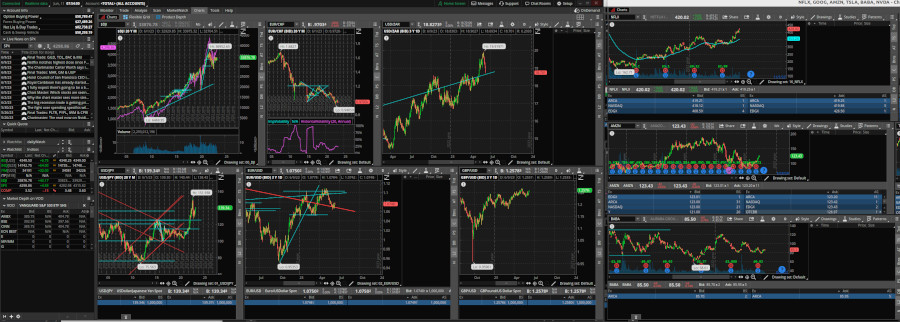“The Millionaire Real Estate Investor” by Gary Keller is a comprehensive guide that offers valuable insights and practical advice for individuals interested in building wealth through real estate investing. In this article, we will delve into the key concepts and strategies outlined in the book, providing a detailed summary for readers seeking to understand the essence of Keller’s teachings.

The Millionaire Real Estate Investor Book Review
About the Author
Gary Keller is a renowned real estate entrepreneur and co-founder of Keller Williams Realty, one of the largest real estate franchises in the world. With over three decades of experience in the industry, Keller has achieved remarkable success and established himself as an authority in real estate investment. His expertise and wealth of knowledge make “The Millionaire Real Estate Investor” a trusted resource for aspiring and seasoned investors alike.
Book Overview
“The Millionaire Real Estate Investor” serves as a comprehensive roadmap for individuals who aspire to create wealth through real estate. Keller’s book outlines a step-by-step process that covers every aspect of real estate investing, from goal setting to evaluating investment results. By following the strategies and principles presented in the book, readers can gain the necessary knowledge and confidence to navigate the complexities of the real estate market successfully.
The Millionaire Real Estate Investor Process
Setting Your Goals
The first crucial step in real estate investing is setting clear and measurable goals. Keller emphasizes the importance of defining your objectives, whether they involve financial freedom, retirement planning, or creating a legacy for future generations. By identifying your goals, you can align your investment strategies and decisions accordingly.
- The Power of Goal Setting:
Gary Keller emphasizes the power of setting goals as a fundamental step in realizing your real estate investing dreams. Goals serve as roadmaps, providing clarity and direction to your efforts. By outlining specific objectives, you can channel your focus, motivation, and resources effectively. Setting goals allows you to measure progress, track achievements, and stay committed to your investment journey.
- The SMART Approach:
Keller introduces the SMART (Specific, Measurable, Achievable, Relevant, Time-Bound) approach to goal setting, a framework widely adopted across various industries. By applying this methodology to your real estate investment goals, you ensure they are well-defined and increase your chances of success. SMART goals are specific in nature, measurable to track progress, achievable within realistic parameters, relevant to your overall vision, and time-bound to create a sense of urgency.
- Creating a Personal Investment Model:
To effectively set goals, Keller suggests creating a Personal Investment Model (PIM). A PIM provides a comprehensive blueprint tailored to your financial circumstances, aspirations, and risk tolerance. It includes defining your financial goals, determining the investment strategy that aligns with your objectives, and outlining the necessary action steps to move forward. A PIM helps you prioritize, make informed decisions, and stay focused on your investment goals.
- Understanding Your Numbers:
Real estate investing involves analyzing and understanding various financial metrics. Keller stresses the importance of gaining a deep understanding of these numbers to set meaningful goals. Key metrics such as cash flow, return on investment (ROI), cap rate, and equity growth rate play a vital role in determining the profitability of an investment. Educating yourself about these metrics empowers you to set realistic and attainable financial goals based on sound financial principles.
- Setting Milestone Goals:
Breaking down your long-term goals into smaller, achievable milestones is crucial for sustained progress. Milestone goals act as stepping stones towards your ultimate vision, providing a sense of accomplishment along the way. By celebrating milestones, you maintain motivation and momentum, making your real estate investment journey more enjoyable and fulfilling.
- Regularly Reviewing and Adjusting Goals:
Goal setting is not a one-time activity but an iterative process. Keller emphasizes the importance of regularly reviewing and adjusting your goals based on market conditions, personal circumstances, and evolving aspirations. Flexibility allows you to adapt to changing dynamics and seize new opportunities that align with your objectives. Regularly revisiting your goals ensures that they remain relevant, challenging, and reflective of your growth as an investor.
Think a Million
Developing a millionaire mindset is essential for achieving success in any endeavor, including real estate investing. Keller explores the power of thoughts and beliefs in shaping one’s reality and emphasizes the significance of cultivating a positive attitude and confidence in your abilities. With the right mindset, you can overcome challenges and persevere through the inevitable hurdles of real estate investment.
- Think Big:
One of the primary foundations of a millionaire mindset is the ability to think big. Keller emphasizes the importance of expanding your vision and setting audacious goals. Rather than limiting yourself to average or mediocre aspirations, think in terms of extraordinary achievements. By stretching your goals and expectations, you create a mindset that is receptive to abundance and immense success.
- Overcome Limiting Beliefs:
Limiting beliefs can hinder your progress and prevent you from reaching your full potential. Keller suggests identifying and challenging these beliefs to overcome them. Whether it’s the fear of failure, self-doubt, or negative conditioning from the past, it is essential to replace these limiting beliefs with empowering ones. Cultivate a positive and growth-oriented mindset that believes in your ability to achieve greatness.
- Embrace a Learning Mindset:
Continuous learning is a hallmark of successful individuals. Adopting a learning mindset allows you to acquire new knowledge, skills, and perspectives that contribute to your growth as an investor. Keller emphasizes the importance of investing in education, attending seminars, reading books, and seeking mentorship from experienced investors. By consistently expanding your knowledge base, you gain a competitive edge and increase your chances of making informed investment decisions.
- Develop Resilience:
The journey to becoming a millionaire real estate investor is not without its challenges and setbacks. Developing resilience is crucial to overcoming obstacles and staying focused on your goals. Keller emphasizes the need to embrace failures and view them as learning opportunities. Cultivate a mindset that sees challenges as stepping stones to success, and develop the ability to bounce back from setbacks with renewed determination.
- Surround Yourself with a Supportive Network:
Building a strong network of like-minded individuals is vital for fostering a millionaire mindset. Surround yourself with positive, motivated, and successful people who inspire and challenge you. Seek out mentors, join real estate investment groups, and participate in networking events to connect with experienced investors. A supportive network provides valuable guidance, accountability, and inspiration on your journey towards financial success.
- Take Action and Persist:
Developing a millionaire mindset is incomplete without taking consistent action. Keller emphasizes the importance of implementing what you learn, making informed decisions, and persisting in the face of challenges. It is not enough to have a mindset of abundance; you must translate it into tangible actions that move you closer to your investment goals. Embrace a proactive approach and develop the habit of taking calculated risks to seize opportunities.
The Millionaire Real Estate Investor Models
Keller presents various models for real estate investing, each with its unique characteristics and benefits. From the traditional rental property model to creative financing and commercial investments, the book offers a comprehensive analysis of different investment models. By understanding these models, readers can select the approach that aligns with their goals and risk tolerance.
- The One-Deal Model:
The One-Deal Model serves as a starting point for novice investors. It involves analyzing individual investment opportunities based on key financial metrics such as cash flow, return on investment (ROI), and equity growth rate. This model enables investors to gain a deep understanding of the numbers and evaluate the profitability of a single investment. By focusing on one deal at a time, aspiring investors can gain valuable experience and build their knowledge base.
- The Three-Way Analysis Model:
As investors gain experience and confidence, Keller introduces the Three-Way Analysis Model, which focuses on analyzing the interaction between income, expenses, and financing. This model provides a holistic view of the investment by evaluating the cash flow, appreciation potential, and tax benefits. By considering all three aspects, investors can make informed decisions and identify opportunities that align with their financial goals.
- The Four-Wealth-Building Models:
To achieve long-term wealth creation, Keller presents four interrelated wealth-building models: the Cash Flow Model, the Appreciation Model, the Debt Pay-Down Model, and the Tax Benefits Model. These models emphasize the importance of creating multiple streams of income and leveraging various wealth-building strategies. By understanding and implementing these models in combination, investors can optimize their investment portfolio and maximize wealth accumulation.
a. The Cash Flow Model focuses on generating passive income through rental properties or other income-producing real estate assets. By selecting properties with positive cash flow, investors can enjoy regular income while building equity.
b. The Appreciation Model capitalizes on the potential for property value appreciation over time. Investors identify markets and properties with favorable growth prospects, allowing them to benefit from increased property values and equity growth.
c. The Debt Pay-Down Model emphasizes the strategic use of mortgage financing. Investors leverage the tenant’s rent payments to pay down the mortgage, thereby building equity and increasing their net worth.
d. The Tax Benefits Model explores the tax advantages associated with real estate investing, such as depreciation deductions and 1031 exchanges. By understanding and utilizing these tax strategies, investors can optimize their tax liabilities and enhance their investment returns.
- The Six Personal Models:
In addition to the wealth-building models, Keller emphasizes the importance of developing six personal models to guide decision-making and prioritize actions. These models cover areas such as net worth goals, annual income goals, monthly cash flow goals, deal finding models, offer models, and financial analysis models. By defining these personal models, investors establish clear objectives, focus their efforts, and maintain a disciplined approach to real estate investing.
The Millionaire Real Estate Investor Strategies
In this section, Keller explores the different investment strategies available to real estate investors. Strategies such as flipping properties, buy and hold, and wholesaling are discussed, along with their advantages and potential pitfalls. Keller encourages readers to evaluate their financial situation, personal strengths, and market conditions to determine the most suitable strategy for their investment journey.
- Focus on Income-Producing Properties:
Keller emphasizes the significance of income-producing properties as a core strategy for real estate investors. These properties, such as rental units or commercial spaces, generate regular cash flow, providing a stable income stream and long-term wealth accumulation. By focusing on properties with strong rental demand and favorable cash flow potential, investors can build a robust and sustainable investment portfolio.
- Long-Term Wealth Building:
Real estate investment is a long-term game, and Keller stresses the importance of adopting a wealth-building mindset. Rather than seeking quick profits, successful investors prioritize long-term appreciation and equity growth. By identifying properties in markets with favorable growth prospects and implementing effective management strategies, investors can enjoy the benefits of property value appreciation and steadily increase their net worth over time.
- Market Analysis and Timing:
Understanding market dynamics and timing is crucial for real estate investors. Keller advises investors to conduct thorough market analysis, including studying economic indicators, population trends, job growth, and infrastructure development. By identifying markets poised for growth and investing during favorable market conditions, investors can capitalize on opportunities and maximize returns. Additionally, Keller emphasizes the importance of staying disciplined and avoiding speculative market timing strategies.
- Buy-and-Hold Strategy:
The buy-and-hold strategy is a core principle in real estate investing, and Keller underscores its significance. By acquiring properties with the intention of holding them for an extended period, investors can benefit from rental income, property appreciation, and tax advantages. This strategy allows for the compounding of wealth over time and provides a solid foundation for long-term financial success.
- Leverage Other People’s Money:
Keller highlights the power of leveraging other people’s money (OPM) as a strategy for real estate investors. By utilizing financing options such as mortgages, partnerships, or private funding, investors can acquire properties with a smaller initial investment. Leveraging OPM allows investors to maximize their purchasing power, increase the number of properties in their portfolio, and potentially enhance returns on their investment.
- Continuous Education and Adaptation:
The real estate market is constantly evolving, and Keller highlights the importance of continuous education and adaptation. Successful investors stay abreast of industry trends, changes in regulations, and emerging technologies. By investing in their knowledge and skills, investors can make informed decisions, adapt to market dynamics, and capitalize on new opportunities.
The Millionaire Real Estate Investor Systems
Implementing effective systems is crucial for achieving long-term success in real estate investing. Keller emphasizes the importance of developing systems for lead generation, deal analysis, and property management. By leveraging technology and streamlining processes, investors can save time and effort while maximizing their returns.
- Lead Generation Systems:
Generating a consistent flow of quality leads is essential for real estate investors. Keller stresses the importance of implementing lead generation systems to identify potential investment opportunities. These systems may include strategies such as direct mail campaigns, online marketing, networking, referrals, and partnerships. By proactively seeking out leads and implementing targeted marketing efforts, investors can increase their chances of finding lucrative investment deals.
- Property Analysis Systems:
Thoroughly analyzing investment properties is critical to making informed decisions. Keller emphasizes the significance of implementing property analysis systems to evaluate the financial feasibility and profitability of potential investments. These systems involve assessing key metrics such as cash flow, return on investment (ROI), cap rate, and market value appreciation potential. By utilizing standardized property analysis tools and conducting due diligence, investors can confidently select properties that align with their investment objectives.
- Acquisition Systems:
Streamlining the property acquisition process is essential for real estate investors. Keller advises implementing efficient acquisition systems that encompass strategies for property identification, negotiation, and closing. This may involve developing relationships with real estate agents, leveraging networking opportunities, utilizing technology platforms for property searches, and establishing standardized processes for making offers and completing transactions. By systematizing the acquisition process, investors can expedite deals and increase their chances of securing profitable investments.
- Financing Systems:
Accessing appropriate financing is crucial for real estate investors. Keller underscores the significance of implementing financing systems to identify suitable lending options and optimize funding opportunities. These systems may involve establishing relationships with lenders, exploring mortgage programs, organizing financial documents, and maintaining a strong credit profile. By having reliable financing systems in place, investors can secure favorable terms, enhance their purchasing power, and maximize their investment potential.
- Property Management Systems:
Effectively managing investment properties is vital for long-term success. Keller emphasizes the importance of implementing property management systems to ensure efficient operations and tenant satisfaction. These systems encompass tenant screening processes, rent collection procedures, property maintenance protocols, and communication channels with tenants. By establishing reliable property management systems, investors can mitigate risks, minimize vacancies, and maximize cash flow from their rental properties.
- Portfolio Evaluation Systems:
Regularly evaluating the performance of the investment portfolio is critical for real estate investors. Keller highlights the significance of implementing portfolio evaluation systems to assess the financial health, growth potential, and risk exposure of the portfolio. These systems may involve tracking income and expenses, analyzing property appreciation, reviewing market trends, and conducting periodic reviews of investment goals. By regularly evaluating the portfolio, investors can identify areas for improvement, make informed strategic decisions, and optimize their investment portfolio.
The Millionaire Real Estate Investor Team
Building a reliable and competent team is a key aspect of successful real estate investing. Keller highlights the significance of assembling a team of professionals, including real estate agents, contractors, property managers, and lenders. Each team member plays a crucial role in supporting your investment goals and ensuring smooth operations.
- Real Estate Agents:
A knowledgeable and experienced real estate agent is a vital member of an investor’s team. Keller highlights the importance of working with an agent who understands the local market, possesses excellent negotiation skills, and has access to off-market deals. A competent agent can help investors identify suitable properties, negotiate favorable terms, and navigate the intricacies of the buying and selling process.
- Lenders and Mortgage Brokers:
Having access to reliable financing options is critical for real estate investors. Keller emphasizes the significance of building relationships with lenders and mortgage brokers who specialize in real estate investments. These professionals can guide investors in understanding different loan products, securing favorable interest rates, and obtaining pre-approvals. Working with trusted lenders ensures smooth transactions and enhances an investor’s ability to seize lucrative investment opportunities.
- Contractors and Handymen:
Maintenance and repairs are an integral part of managing investment properties. Keller stresses the importance of establishing relationships with reliable contractors and handymen who can handle various tasks, such as renovations, repairs, and general maintenance. Building a network of skilled professionals ensures prompt and cost-effective property upkeep, enhances tenant satisfaction, and preserves the property’s value.
- Property Managers:
For investors who prefer a more hands-off approach, hiring a property manager is crucial. Keller highlights the significance of partnering with a reputable property management company or professional. Property managers handle tasks such as tenant screening, rent collection, lease management, property maintenance, and addressing tenant concerns. Entrusting these responsibilities to a competent property manager allows investors to focus on strategic decision-making and expanding their investment portfolio.
- Attorneys and Accountants:
Navigating legal and financial matters is an essential aspect of real estate investing. Keller emphasizes the importance of having a reliable team of attorneys and accountants who specialize in real estate transactions and taxation. These professionals can provide guidance on legal contracts, help investors structure their businesses effectively, and ensure compliance with tax laws. Building relationships with skilled attorneys and accountants safeguards investors’ interests, minimizes risks, and optimizes tax strategies.
- Networking and Mentors:
Expanding one’s network and seeking guidance from experienced mentors is invaluable in the real estate investing journey. Keller emphasizes the importance of joining real estate investment groups, attending networking events, and seeking mentorship from seasoned investors. Engaging with like-minded individuals and industry experts provides opportunities for learning, collaboration, and potential partnership. Mentors can provide valuable insights, share experiences, and offer guidance based on their own success in the real estate market.
The Millionaire Real Estate Investor Results
Tracking and evaluating investment performance is essential for making informed decisions and maximizing profitability. Keller provides insights into measuring key performance indicators (KPIs) and assessing the financial health of your investments. By continuously monitoring and analyzing results, investors can identify areas for improvement and adjust their strategies accordingly.
- Financial Metrics and Analysis:
Keller emphasizes the significance of understanding and analyzing financial metrics to evaluate investment performance. Key metrics include cash flow, return on investment (ROI), cap rate, gross rent multiplier (GRM), and net operating income (NOI). By regularly tracking and analyzing these metrics, investors can assess the profitability and efficiency of their investment properties. This analysis enables investors to identify underperforming properties, make necessary adjustments, and capitalize on high-performing assets.
- Total Return on Investment:
Real estate investments encompass not only rental income but also potential appreciation and tax benefits. Keller advises investors to consider the total return on investment, which includes both cash flow and property value appreciation over time. By evaluating the total return on investment, investors gain a comprehensive view of their investment performance and can make informed decisions regarding property acquisitions, improvements, and sales.
- Market Comparisons:
Comparing investment performance to market trends is crucial for assessing the relative success of real estate investments. Keller emphasizes the importance of evaluating property performance in relation to the overall market conditions, such as local property values, rental rates, vacancy rates, and economic indicators. By benchmarking investment performance against market benchmarks, investors can identify areas of strength and areas that require improvement.
- Property-Specific Analysis:
Investors should conduct property-specific analysis to evaluate the performance of individual assets within their portfolio. Keller advises investors to assess factors such as location, property condition, tenant quality, rental rates, and expenses. By conducting property-specific analysis, investors can identify opportunities for optimization, such as increasing rental rates, improving property management, or reducing operating expenses.
- Regular Reviews and Adjustments:
Regularly reviewing investment performance is essential for making informed decisions and adjusting strategies as needed. Keller recommends conducting periodic evaluations to assess property performance, financial metrics, market conditions, and investor goals. By conducting regular reviews, investors can identify areas that require adjustments, such as property upgrades, refinancing opportunities, or divestment decisions.
- Long-Term Strategy Alignment:
Evaluating investment performance also involves aligning investment strategies with long-term goals. Keller emphasizes the importance of regularly assessing investment performance in the context of an investor’s overall wealth-building strategy. This assessment helps investors determine if their current investment properties are aligned with their long-term goals and whether adjustments are necessary to optimize the portfolio composition.
Conclusion
“The Millionaire Real Estate Investor” by Gary Keller is an invaluable resource for individuals looking to build wealth through real estate investing. By following the principles and strategies outlined in the book, readers can gain the knowledge and confidence necessary to navigate the complexities of the real estate market successfully. Whether you’re a beginner or an experienced investor, this book offers practical advice and timeless wisdom to help you achieve your financial goals.
FAQs (Frequently Asked Questions)
- What makes “The Millionaire Real Estate Investor” a valuable resource for beginners?“The Millionaire Real Estate Investor” provides a comprehensive guide to real estate investing, covering everything from goal setting to investment strategies and tactics. It offers practical advice and actionable steps, making it an excellent resource for beginners starting their investment journey.
- Does the book provide practical advice and actionable steps?Yes, the book offers practical advice and actionable steps at every stage of real estate investing. Gary Keller provides detailed strategies and techniques that readers can implement in their own investment endeavors.
- Can this book be useful for experienced real estate investors as well?Absolutely! “The Millionaire Real Estate Investor” offers valuable insights and advanced strategies that can benefit experienced investors looking to enhance their skills and optimize their investment portfolio.
- How does “The Millionaire Real Estate Investor” differ from other real estate investment books?What sets “The Millionaire Real Estate Investor” apart is its comprehensive approach. It covers all aspects of real estate investing, from goal setting to building a team and evaluating investment results. The book provides a holistic view of the real estate investment process.
- Are there any real-life examples or case studies included in the book?Yes, “The Millionaire Real Estate Investor” includes numerous real-life examples and case studies. These stories offer practical insights and inspiration, allowing readers to learn from the experiences of successful real estate investors.











